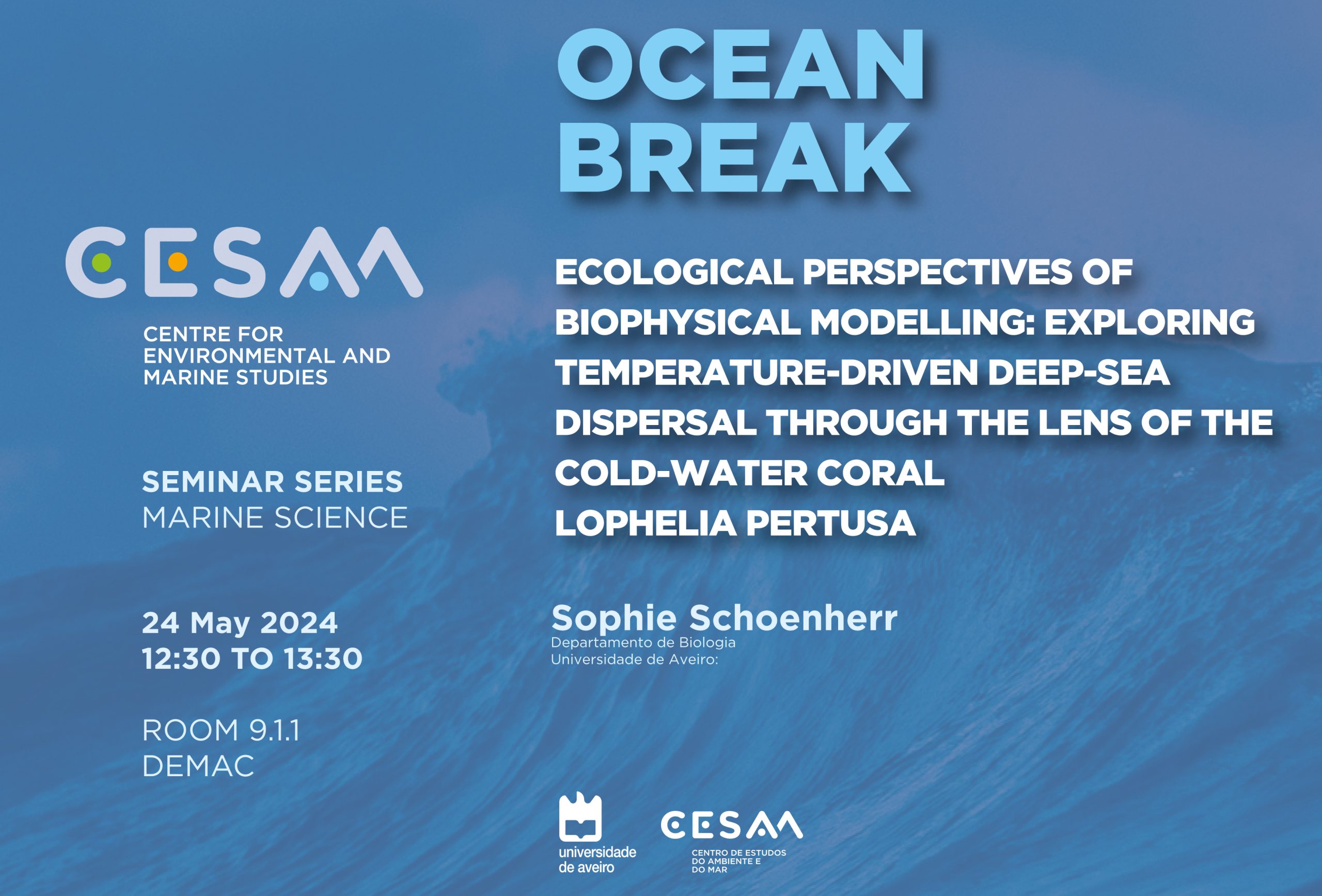
On May 24, 2023, between 12:30 PM and 13:30 PM, another edition of the “Ocean Break” series of seminars related to marine research conducted at CESAM will take place in amphitheater 9.1.1 (DEMaC).
This time, researcher Sophie Schoenherr from Biology Department of the University of Aveiro will address the topic: “Ecological perspectives of biophysical modelling: Exploring temperature-driven deep-sea dispersal through the lens of the cold-water coral Lophelia pertusa”.
Reef-building cold-water corals (Order: Scleractinia) are true oases of life in the deep-sea supporting an immense biodiversity through their structure-building capacity. Our knowledge on the biology and ecology of these remote ecosystems is, however, still very limited. Today more than ever, deep-sea reefs are threatened by numerous natural and anthropogenic pressures including pollution, bottom trawl fishing, climate change, and – most recently – deep-sea mining. Changes in ocean physics and chemistry comprise other stressors that may have severe impacts on coral health and resilience. To protect cold-water corals, we need to identify the drivers of population dynamics and connectivity, which, ultimately, dictate whether or not populations persist over time and space. Biophysical models are cost-effective tools that allow to predict larval dispersal by combining existing knowledge on coral life-history traits, larval behaviour and ocean currents. In this work, I used the most common and best-studied cold-water coral, Lophelia pertusa, as a model species to study the dispersal of deep-sea larvae in the Gulf of Cadiz. Since adult coral colonies are sessile, the only time L. pertusa can disperse is during their larval stage. The pelagic larval duration (PLD), i.e., the length of time larvae spend in the water column, depends on the temperature experienced by the larvae. Consequently, temperature – through its influence on PLD – can have a considerable effect on the dispersal distance and, ultimately, population connectivity. In this seminar, I will show the results of the temperature-dependent dispersal model and explore the ecological implications of the findings.